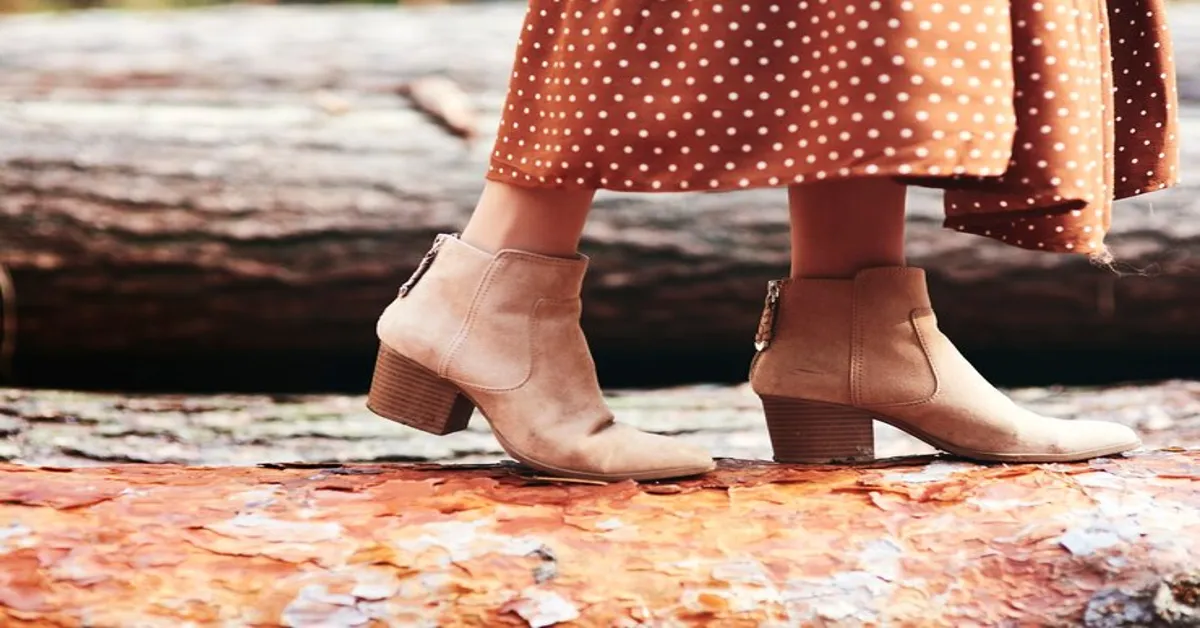If you’re searching for what botines are, the answer is simple on the surface—but rich in depth. Botines are ankle-length boots, typically leather or suede, worn by men and women across centuries and cultures. Originally created for practicality and protection, they have since evolved into fashion staples, symbols of rebellion, and even cultural identifiers. Unlike sneakers or high boots, botin-es occupy a liminal space—offering the formality of structured footwear with the freedom of movement that modern life demands.
In this article, we explore the anatomy, history, styles, and cultural significance of botines in contemporary wardrobes and across global fashion.
What Are Botines?
Botines (pronounced boh-TEE-nes) are ankle boots that cover the foot and reach just above the ankle bone. Often made of leather, synthetic blends, or canvas, they are distinguished from taller boots by their height and from shoes by their structure and support. Their appeal lies in versatility—boti-nes can be worn with trousers or skirts, on cobblestones or carpets, in boardrooms or dance halls.
Their global popularity spans gender, age, and aesthetic. In Spain and Latin America, botines have roots in equestrian and military tradition. In Western fashion, they’ve become icons of everything from punk to prairie chic.
The Anatomy of a Botín
To understand the enduring relevance of botines, it helps to explore their design anatomy:
| Component | Function and Style Consideration |
|---|---|
| Upper | Covers foot and ankle; can be leather, suede, synthetic, or knit |
| Shaft Height | Typically 3–5 inches from arch, stopping just above the ankle bone |
| Closure | Zipper, laces, elastic panels, or slip-on |
| Heel Type | Flat, block, wedge, Cuban, or stiletto |
| Toe Shape | Round, almond, square, pointed—affecting formality and comfort |
| Outsole | Rubber for traction; leather for elegance |
| Insole | Often padded for comfort; hidden tech for posture or elevation |
This balanced construction is part of why boti-nes remain relevant—they offer structure without the weight of a tall boot.
A Brief History of Botines
The word botín in Spanish dates back to the 17th century, derived from “boot” and adapted regionally to indicate a shorter, utilitarian variant. Originally worn by soldiers and rural laborers, botines were prized for their ease of movement and ability to transition from muddy fields to dusty towns.
In the 19th century, boti-nes gained popularity in Europe as part of women’s wear, often paired with corseted dresses and walking skirts. They symbolized a shift: women stepping into the public sphere needed mobility and modesty—and botines offered both.
The 20th century saw boti-nes adapt to trends: flapper-era lace-ups, mid-century Cuban heels, punk-era studded variants, and minimalist Chelsea boots. Today, they exist across price points and subcultures—from luxury designer lines to fast fashion shelves.
The Cultural Variants of Botines
While botines share a common ankle-length form, their function and symbolism shift across contexts. Below is a breakdown of different cultural expressions of botines:
| Region/Culture | Style Characteristics | Social/Cultural Significance |
|---|---|---|
| Spain | Classic leather with narrow toe; often equestrian style | Tradition, heritage, practical elegance |
| Mexico | Suede with embroidery; folkloric or cowboy influences | Identity, dance, festival wear |
| Argentina | Tango botines with split soles and low heel | Dance, intimacy, national pride |
| United States | Chelsea boots, western boots, combat-style | Rebellion, fashion, Americana |
| France | Sleek leather, almond toe, mid-heel | Sophistication, minimalist fashion |
| Japan | Soft-soled, unstructured, tabi-inspired ankle boots | Craft, comfort, subtlety |
The adaptability of botines means they can reflect either uniformity or individuality, depending on who’s wearing them—and how.
Why Botines Remain a Wardrobe Essential
Unlike many footwear trends, botine’s persist. Here are five reasons why:
- Seasonal Versatility
Botines work across seasons—warm enough for fall and winter, breathable enough for spring. - Gender-Neutral Appeal
Their androgynous shape allows them to be styled for all genders without compromise. - Style Range
From minimalist to maximalist, grunge to glam, there’s a botín for every taste. - Functionality
Unlike heels or loafers, botine’s can navigate city streets, office hallways, and outdoor venues with ease. - Silhouette Enhancer
A good pair elongates the leg, anchors the outfit, and adds sophistication.
In capsule wardrobes, fashion blogs, and minimalist design guides, botines consistently rank among the top five essential shoes.
Botines and Sustainability
As fast fashion faces backlash and consumers seek ethical fashion, botine’s offer a model of durability. A well-constructed pair can last a decade or more. Some brands now manufacture recycled or plant-based leather versions, and cobblers increasingly report more people requesting botín repair instead of replacement.
In response, independent designers are reviving slow fashion practices, handcrafting botines with traditional techniques and biodegradable materials.
“Botines are shoes that you live in, not just wear. They age with you,” says Marta Cuervo, a shoemaker in northern Spain.
Styling Botines: A Guide Across Genders
While styling choices are deeply personal, here are widely loved ways people incorporate botines into their wardrobe:
For Women
- With Dresses: Floral midi dresses paired with black leather botines for contrast
- Workwear: Structured blazers, tapered pants, and pointed-toe botine’s in neutral tones
- Festival Style: Fringed suede botines with denim shorts and layered jewelry
For Men
- Smart Casual: Slim jeans, tucked button-down, and dark Chelsea botines
- Streetwear: Joggers, oversized hoodie, and high-ankle combat-style botines
- Officewear: Trousers, knit pullover, and almond-toe leather botine’s
For Nonbinary or Androgynous Expression
- Layered Silhouettes: Flowy culottes or high-waisted pants with bold-heeled or flat botines
- Contrast Styling: Feminine skirts with rugged boots, or masculine tailoring with sleek ankle styles
Botines in Pop Culture
From David Bowie to Zendaya, botines have graced stages, screens, and red carpets. Bowie’s stacked-heel glam botines became part of his gender-fluid legacy. Today, young performers and influencers continue the tradition, seeing botine’s as a canvas for identity, not just style.
In TV shows from Euphoria to Killing Eve, botines feature in wardrobe design that signals both rebellion and elegance. Their cinematic appeal lies in their ability to suggest action, intention, and transformation.
Buying the Right Pair: Key Considerations
Choosing botine’s can be daunting, given the range. Here are tips for making the right choice:
- Material Matters: Opt for genuine leather or eco-leather if seeking durability and breathability.
- Heel Height: Flat for daily wear, block for work, Cuban for dance or statement.
- Toe Shape: Almond is most versatile; pointed elongates the leg but may reduce comfort.
- Fit: Ensure snug ankle fit; too loose creates slouch, too tight causes blisters.
- Color: Neutrals (black, tan, grey) offer more combinations; bold hues add character.
Consider your primary environment—urban, rural, work, or leisure—as botine’s often reflect context as much as taste.
Care and Longevity
A good pair of botines deserves good care:
- Clean Regularly: Wipe with a damp cloth; use suede brush for nubuck styles.
- Store Properly: Use shoe trees to maintain shape; keep in breathable bags.
- Weatherproofing: Treat leather and suede with protective spray before first wear.
- Sole Maintenance: Replace worn soles to extend life and comfort.
- Condition Leather: Every few months, apply leather balm to maintain flexibility and color.
Botines, unlike sneakers or sandals, can be restored—making them both stylish and sustainable long-term investments.
Economic and Cultural Symbolism
In many places, botine’s symbolize mobility—literal and social. For immigrants, professionals, or rural-to-urban migrants, buying one’s first high-quality pair is a milestone. For others, they are a reminder of home traditions—especially in regions where dance and ritual still include ankle boots as uniform or expression.
In economics, the botín is part of an increasingly diversified footwear industry worth over $400 billion globally. In Latin America, artisans are reclaiming local materials and styles to compete with global fashion, giving botines new national relevance.
Are Botines Political?
In a sense, yes. Like most clothing, botine’s can carry political weight.
- Women’s Empowerment: Replacing painful heels with practical botines has been framed as a feminist act in some fashion circles.
- Gender Neutrality: The rise of unisex botine’s challenges binary fashion expectations.
- Slow Fashion Symbol: In a fast-paced, disposable culture, owning one well-made pair of boots is a quiet protest.
The politicization of fashion doesn’t spare footwear—and botines, as both everyday object and expressive medium, walk that tension daily.
The Future of Botines
Looking ahead, botines are poised to remain relevant—perhaps more than ever—as the world leans toward hybrid lifestyles. We need shoes that adapt to Zoom calls and grocery runs, to protest marches and rooftop dinners. Botines, flexible yet rooted, meet this moment.
Emerging trends include:
- Smart Insoles: Tech-enabled comfort monitoring in high-use professional botine’s
- Vegan Innovation: Mushroom-based leathers and corn-fiber alternatives
- Modular Styles: Interchangeable soles and uppers for function/style shifts
Designers are no longer asking, Will people wear this? but rather, How long can they walk in it?
Final Thoughts: More Than a Boot
At first glance, botines might seem simple—just boots that end at the ankle. But they’re more than that. They’re legacy and future. They carry the utility of workwear, the elegance of couture, the politics of movement, and the intimacy of personal style.
Botine’s are not just what you wear. They’re where you go. Who you walk with. How you stand.
And increasingly, what you stand for.
FAQs
1. What are botines, and how are they different from other boots?
Botines are ankle-length boots that cover the foot and reach just above the ankle. Unlike tall boots, they stop short of the calf, offering greater mobility. They differ from shoes by offering more structure, coverage, and often a defined heel.
2. Can botines be worn year-round?
Yes. Botines are highly versatile and can be worn in all seasons. Lightweight leather or fabric styles work for spring and fall, while insulated or waterproof versions are ideal for winter. Open-cut or perforated designs even make summer wear possible.
3. Are botines gender-specific or unisex?
Botines are widely worn by all genders. While some designs are tailored toward men’s or women’s sizing or fashion preferences, many styles are unisex. Their adaptability has made them a staple in androgynous and gender-fluid fashion as well.
4. How should I style botines for work or formal occasions?
Opt for sleek, minimalist designs—such as black leather Chelsea or almond-toe block heel botines. Pair them with tailored trousers, midi skirts, or structured blazers for a polished look that remains comfortable and modern.
5. What should I look for when buying high-quality botines?
Look for durable materials like full-grain leather or eco-friendly alternatives, secure stitching, comfortable insoles, and strong soles. The best botines balance style with function—offering support, longevity, and ease of wear across different outfits and settings.











